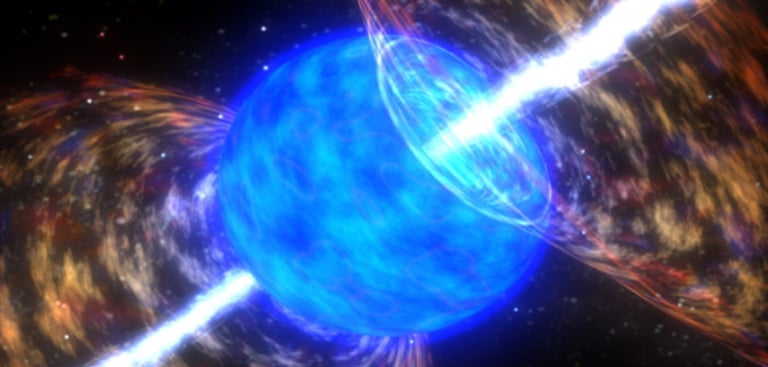Einstein Probe Unveils 12 Billion-Year-Old Cosmic Explosion, Linking FXTs to Stellar Death and Reionization
August 26, 2025
The research was published in Nature Astronomy on August 19, 2025, highlighting the importance of FXTs for understanding stellar death and early universe evolution.
The Einstein Probe's detection of a 27-minute X-ray burst near Achernar, associated with an 8-second gamma-ray burst (GRB240315C), underscores the potential link between massive star collapse and FXTs.
Astronomers have used the Einstein Probe to trace a particularly distant FXT back to its source, revealing that light from this cosmic explosion traveled over 12 billion years, making it the most distant event from which light has been directly observed escaping around stars.
Since its launch in January 2024, the Einstein Probe has significantly advanced the understanding of fast X-ray transients (FXTs), detecting over 120 events in just 18 months and providing rapid alerts for follow-up observations across multiple wavelengths.
FXTs are brief bursts of X-rays lasting seconds to hours, originating from distant galaxies, with their precise origins previously unclear but thought to involve massive star supernovae leading to black hole formation.
This groundbreaking observation links FXTs to gamma-ray bursts (GRBs) and massive stellar explosions, supporting the idea that FXTs are related to these phenomena, though they also display diversity, including 'dark' FXTs without gamma-ray counterparts and those associated with black hole formation.
Observations from the VLT and Gran Telescopio Canarias showed that the FXT's host galaxy had very little hydrogen, indicating a significant escape of ultraviolet light and suggesting such galaxies could have contributed to the universe's reionization.
Follow-up observations identified a new optical source, AT2024eju, likely the afterglow of the burst, with spectra confirming the event's extreme distance and redshift effects, as the light traveled over 12.5 billion years.
A notable FXT, designated EP240315A, was detected on March 15, 2024, when the universe was less than 10% of its current age, with its light traveling over 12 billion years and releasing more energy in seconds than the Sun will over its entire lifetime.
The study notes two remaining mysteries: a seven-minute delay between X-ray and gamma-ray emissions, possibly related to jet orientation, and substantial ultraviolet emission in the afterglow, challenging existing models of the burst environment.
Overall, FXTs are crucial for understanding stellar death, cosmic reionization, and the evolution of the early universe, providing insights into some of the most energetic and distant events observed to date.
Summary based on 2 sources

